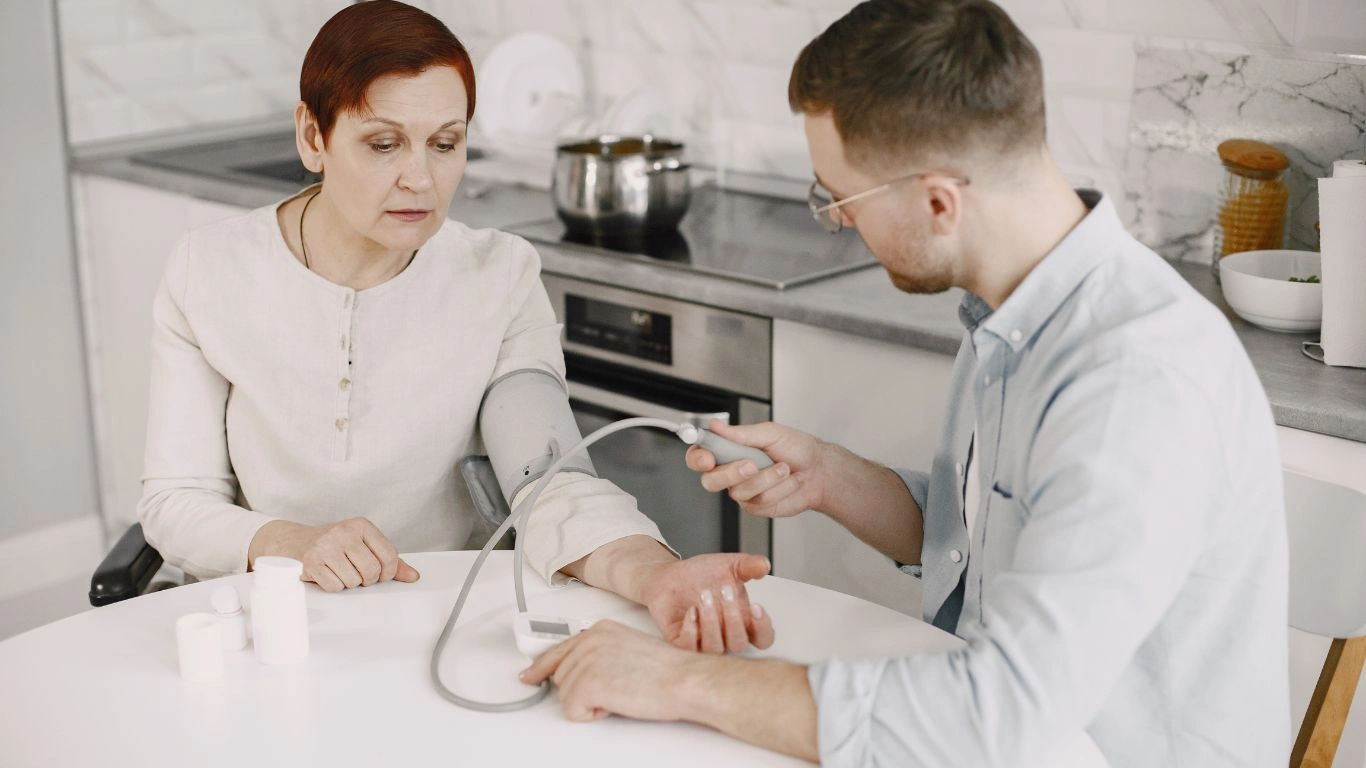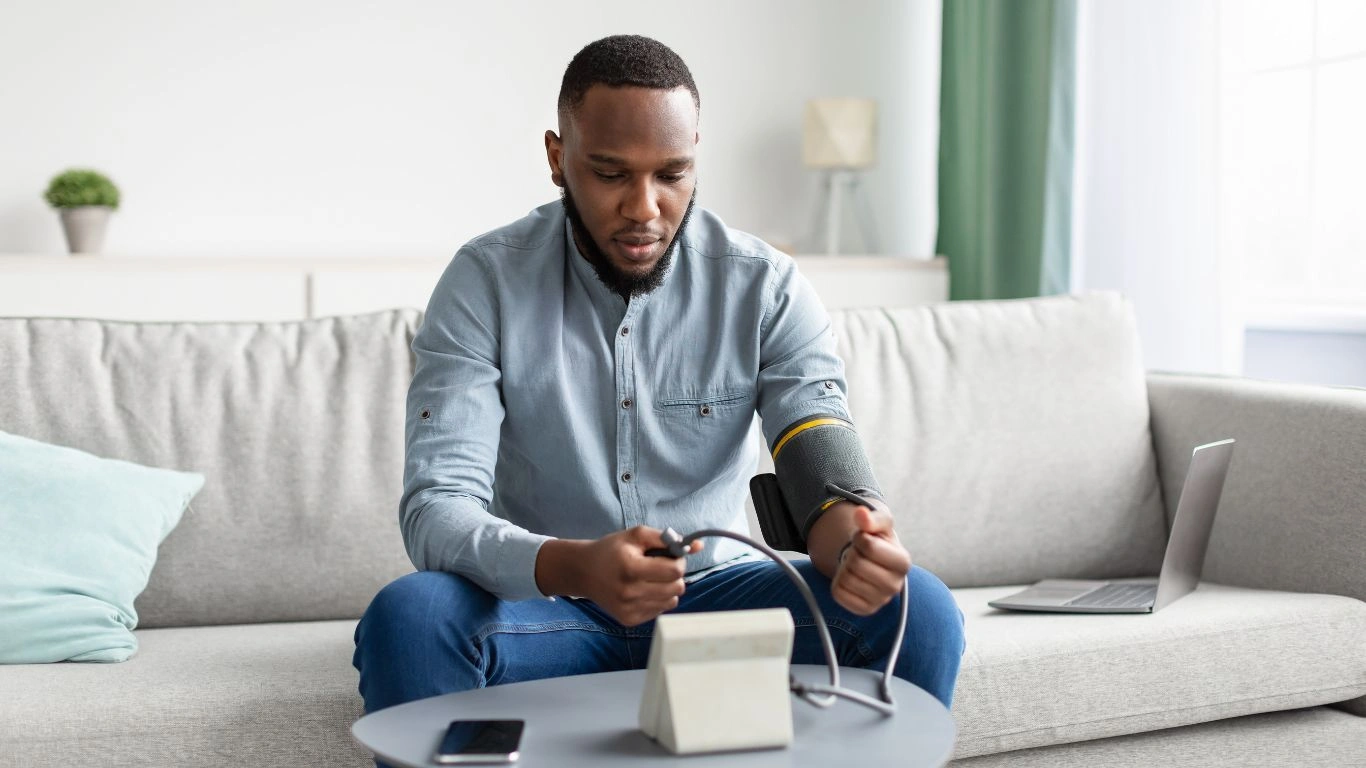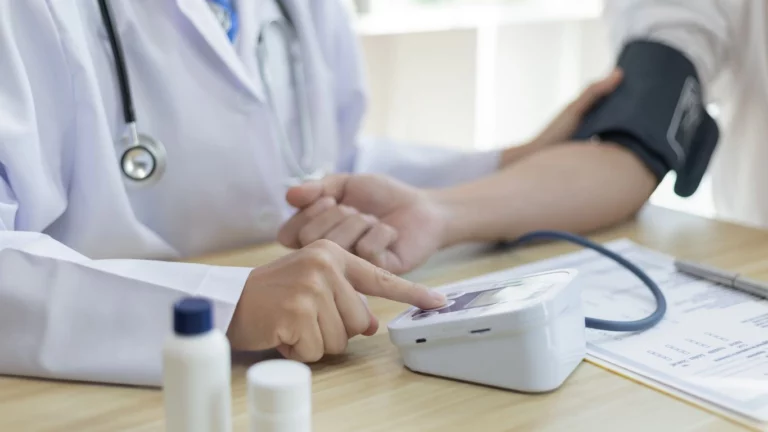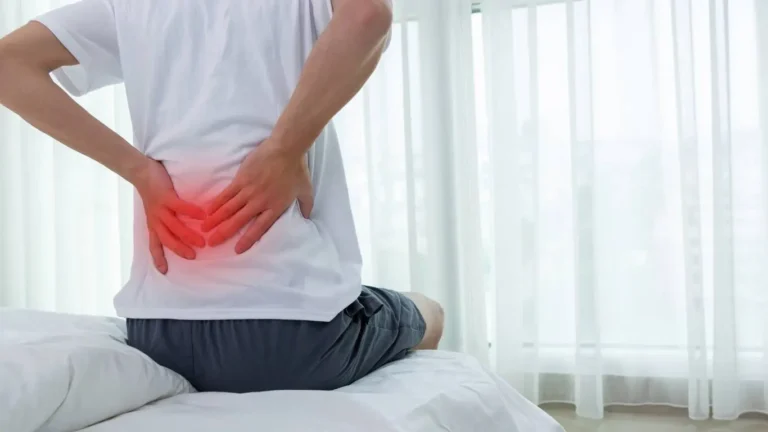Shocking Truth: Can Water Fasting Reduce Hypertension Naturally?
Can water fasting reduce hypertension? It’s a question I’ve been asked quite a few times in clinic, especially by patients who are already exploring lifestyle changes to manage their blood pressure. As an internal medicine physician who’s spent years diving into hypertension management, I can say it’s a fascinating area—one that mixes emerging research with real-world outcomes. Let’s talk through it together, like we would in a consult room. I’m not here to preach or throw clinical jargon at you—I’ll share what I’ve seen, what the research suggests, and what you should know before diving into anything drastic like water fasting.
What is Water Fasting, and Why Are People Doing It?

Water fasting is exactly what it sounds like—consuming nothing but water for a set period. No smoothies, no black coffee, not even bone broth. Just good ol’ H2O. The idea is to give your body a metabolic reset by forcing it to burn through stored energy, reduce insulin levels, and potentially trigger cellular repair mechanisms like autophagy.
Now, let’s be real—people try water fasting for all kinds of reasons: weight loss, detoxification (even if that term is thrown around a bit loosely), mental clarity, and yes, to help with blood pressure. I’ve had patients who swear it helps them feel “lighter” and more in control, and others who found it too tough to maintain without side effects. So how does this all tie into hypertension?
Can Water Fasting Reduce Hypertension? Let’s Break It Down

The Physiology Behind It
When you stop eating, your insulin levels drop. This in turn reduces sodium retention—yes, insulin actually plays a role in how much sodium your kidneys hold on to. Less sodium means less fluid retention, and that means a potential drop in blood pressure. That’s one piece of the puzzle.
Also, during fasting, sympathetic nervous system activity can decrease—this is the “fight or flight” side of the nervous system that tends to raise blood pressure. Lower sympathetic tone = potentially lower BP. That’s a physiological win, but it’s not always guaranteed for everyone.
What the Studies Say (And What They Don’t)
Some clinical studies—especially ones out of fasting-focused clinics—do show promising drops in both systolic and diastolic pressure after 7 to 14 days of medically supervised water fasting. We’re talking reductions of 20 mmHg or more in some cases. But before you cancel your grocery order, there’s a big caveat: these were highly controlled environments with expert monitoring.
Important to note: these studies also often involve salt-free, plant-based refeeding afterward, which could skew the results. Was it the fasting, or the whole protocol?
My Experience with Patients Who Tried Water Fasting

I’ve had a handful of patients who tried short-term water fasting—usually 24 to 72 hours—on their own. Most were pretty health-literate folks doing lots of research (and yes, YouTube doesn’t count as research, y’all). Some of them noticed improvements, especially those who were also cutting sodium and processed foods from their diets. A few saw only modest changes, and one ended up in the ER from dizziness and dehydration. So again—context matters.
- One middle-aged patient dropped her systolic pressure from 150 to 130 over five days of fasting, then went plant-based.
- Another hypertensive male in his 60s got lightheaded and had to stop on day two. His BP barely budged.
- One young adult with borderline pressure saw results but also lost muscle mass—something he wasn’t thrilled about.
Bottom line? Water fasting can reduce hypertension in some people, especially when part of a bigger lifestyle shift. But it’s not a one-size-fits-all solution. And please—for the love of your kidneys—don’t do this without talking to your doctor first, especially if you’re on meds like ACE inhibitors, diuretics, or beta-blockers. You don’t want to mess around with electrolyte balance without supervision.
Red Flags to Watch For
- Dizziness or fainting: Might be a sign your pressure is dropping too fast or you’re dehydrated.
- Heart palpitations: Could mean electrolyte imbalance, especially if potassium gets too low.
- Fatigue or brain fog: Common early on but shouldn’t persist past day two or three.
So yeah—water fasting might help your blood pressure, but it’s not something to dabble in lightly. It’s powerful. That means it can help… but also hurt if not done with care.
When Water Fasting Goes Too Far: Risks You Can’t Ignore

Let’s be honest—just because something is “natural” doesn’t mean it’s always safe. I’ve seen patients go into water fasting with the best intentions, only to end up feeling worse, not better. From electrolyte imbalances to orthostatic hypotension (fancy term for feeling dizzy when you stand up too fast), the risks are real, especially if you’re not doing it under medical supervision.
Hypertension isn’t a one-path condition. For some, blood pressure is driven by diet and lifestyle. For others, it’s more genetic, or tied to kidney function, or even underlying sleep issues like apnea. Water fasting might improve things temporarily, but if you’re not addressing the root cause, those numbers can spike right back up the second you go back to your usual routine.
Common Pitfalls I’ve Seen
- Overconfidence: “I’ll just do it for a few days, what could go wrong?” A lot, actually—especially if you’re on medications.
- Lack of prep: Jumping straight into water fasting from a standard Western diet is like going from 0 to 100. Ease in!
- Ignoring warning signs: Your body will talk to you. Lightheadedness, chest pain, blurry vision? Stop and check in with a professional.
One of my patients, a guy in his early 50s with stage 2 hypertension, decided to water fast on a whim after watching a documentary. No prep, no plan, and he didn’t adjust his meds. By day four, he was in my office pale as a ghost with BP that was dangerously low. That was a close call. Don’t be that guy.
How to Try Water Fasting Safely (If You’re Going to Try It)

Alright, if you’re still curious and thinking, “Okay, but I really want to try this,” let’s talk about how to do it in the safest way possible. I’m not here to tell you *not* to do it. I’m here to help you make an informed decision with your health in mind.
Start Slow and Ease In
Don’t just cut everything off overnight. Start by reducing processed foods and added sugars. Maybe try intermittent fasting first—say, a 16:8 window—before diving into full-day water fasts. Your body needs time to adjust to using fat stores for fuel instead of a constant supply of carbs.
Talk to Your Doctor (Seriously)
I can’t stress this enough. Especially if you’re on blood pressure meds, diuretics, or have kidney issues. Water fasting changes how your body processes electrolytes and fluid. It could interact with your meds in dangerous ways. A check-in with your doc can help tailor a safer plan and monitor progress.
Consider Supervised Fasting Clinics
There are legitimate medical fasting centers out there (like TrueNorth in California) that offer evidence-based water fasting protocols with daily monitoring. It’s not spa-level glamorous, but it’s clinical and safe. If you’re serious about water fasting to manage hypertension, doing it in that kind of environment is 100x better than winging it alone at home.
What Happens After the Fast Matters Just as Much

Let’s say you make it through a water fast safely, and your BP drops—great! But what happens next? That’s the part many people forget. If you immediately go back to a high-sodium, processed diet, all those benefits will be short-lived.
In my experience, the folks who kept their blood pressure down long term were the ones who used the fast as a springboard. They reintroduced food slowly with low-sodium, whole-plant meals, drank plenty of fluids with minerals, and stayed consistent with walking or light exercise.
Smart Refeeding Guidelines
- Go gentle: Start with fruit, steamed veggies, broths, and soft-cooked grains.
- Skip the salt: Your taste buds are reset—ride that wave and keep things simple and clean.
- Hydrate smart: Add a pinch of mineral salt or a splash of lemon to water during refeeding days to help stabilize electrolytes.
Don’t forget—your metabolism is in a different state post-fast. Reintroducing food too fast can lead to refeeding syndrome in extreme cases, which is a medical emergency. Again, this is why medical supervision matters if you’re fasting longer than a couple days.
How to Tell If It’s Working
If you’re fasting for blood pressure, here are a few signs it might be helping:
- Lower morning BP readings: Especially after a few days, you might see consistent drops in your numbers.
- Less puffiness: Reduced sodium = less bloating and swelling, which patients often notice in their face and fingers.
- Improved energy and focus: Once the initial fatigue wears off, some people feel mentally clearer—often linked to reduced systemic inflammation.
But again—if your pressure drops too much, or if you feel worse instead of better, hit the brakes. No health benefit is worth pushing your body into crisis mode.
Long-Term Impact: Is Water Fasting a Sustainable Tool for Hypertension?

Alright, let’s get into the long game. Can water fasting reduce hypertension in the *long run*? That’s the real question, isn’t it? Not just, “Can it drop my numbers for a few days?” but “Can this be part of my lifestyle?” And here’s the honest truth from my perspective as a physician who’s seen the ups and downs of this approach: it depends entirely on how you use it.
I’ve seen patients who used water fasting as a one-time reset and then never addressed their diet, activity, or stress levels. Guess what? Their blood pressure bounced back up in a heartbeat—pun intended. But others used fasting strategically, alongside a serious commitment to change, and saw their readings normalize without meds, or at least with lower doses.
Think of Water Fasting as a Catalyst, Not a Cure
We have to stop thinking of water fasting like it’s a miracle fix. It’s more like flipping the first domino. It can help you shift your metabolism, reduce inflammation, and yes—lower blood pressure—but only if what follows supports those gains. It’s like buying new running shoes and expecting to get fit just from owning them. You’ve still got to show up every day.
Who Might Actually Benefit the Most?

From what I’ve seen, certain patients tend to respond better to water fasting as a tool for hypertension management. You might find yourself in one of these groups:
- Early-stage hypertension: Especially if your readings are hovering around 130–140 systolic and you’re not yet on meds.
- Motivated lifestyle changers: Folks who are already exploring whole-food, plant-based diets or Mediterranean eating plans tend to do best post-fast.
- People struggling with medication side effects: Some patients want alternatives to meds due to fatigue or electrolyte imbalances. Fasting isn’t a substitute, but it can be part of a conversation with your physician.
One of my favorite patient success stories was a retired schoolteacher in her 60s. She was newly diagnosed with hypertension and terrified of starting medications. Together, we worked out a short fasting plan followed by a transition to plant-heavy eating. Over six months, she lost 22 pounds, dropped her BP from 148/92 to 122/78, and never needed to fill that prescription. But she put in the work beyond just fasting—and that made all the difference.
But… It’s Not for Everyone
Let me be super clear: water fasting is not safe or appropriate for everyone. If you’re diabetic, pregnant, underweight, recovering from an eating disorder, or taking multiple meds for blood pressure, this isn’t something to dabble with solo. And honestly? Even healthy folks benefit from supervision. Your body is more complex than a simple on/off switch. Always respect that.
What Else Should You Be Doing to Support Lower Blood Pressure?
If you’re truly serious about improving your BP, don’t let fasting be your only tool. Build a strong foundation with these evidence-based habits:
- Reduce sodium: Aim for under 1500 mg/day. Trust me, your taste buds will adapt.
- Increase potassium: Foods like bananas, spinach, and sweet potatoes help balance sodium.
- Move daily: Walking 30 minutes a day can lower systolic pressure by 5 to 10 points.
- Prioritize sleep: Sleep apnea and poor sleep are major players in hypertension.
- Manage stress: Deep breathing, mindfulness, therapy—whatever works for you. Chronic stress = chronic pressure.
Fasting is just one potential chapter in a much bigger story. Let it be a launching pad—not the whole plan.
References
- American Heart Association
- National Heart, Lung, and Blood Institute
- National Center for Biotechnology Information (NCBI)
- TrueNorth Health Foundation
Disclaimer
This article is for informational purposes only and is not a substitute for professional medical advice, diagnosis, or treatment. Always consult with your healthcare provider before starting any fasting regimen, especially if you are on medications or managing a chronic health condition. What works for one person may not be safe or effective for another. Individual needs, risks, and health status should always be considered first.

Dr. Gwenna Aazee is a board-certified Internal Medicine Physician with a special focus on hypertension management, chronic disease prevention, and patient education. With years of experience in both clinical practice and medical writing, she’s passionate about turning evidence-based medicine into accessible, actionable advice. Through her work at Healthusias.com, Dr. Aazee empowers readers to take charge of their health with confidence and clarity. Off the clock, she enjoys deep dives into nutrition research, long walks with her rescue pup, and simplifying medical jargon one article at a time.






